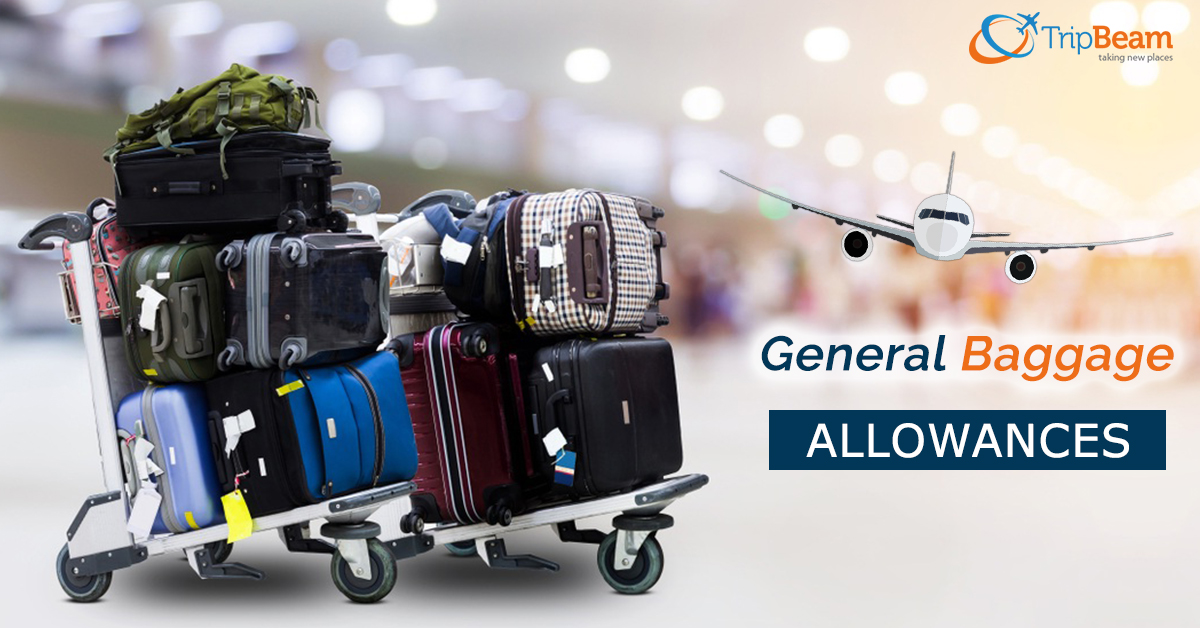Traveling and packing go hand in hand. A passenger’s baggage is of great value. Therefore, airlines have well-defined baggage policies.


There are two types of luggage, ‘hand’ and ‘hold.’ They are better known as carry-on baggage and checked-in baggage, respectively.
Every airline has varying baggage rules. For instance, Southwest airline suitcase rules are different from Lufthansa.
However, all air carriers share some standard regulations and guidelines. They are as follows:
1. Factors Affecting Baggage Allowance
Multiple factors affect your baggage allowance. These include:
- Destination: If you are flying to an international destination, the baggage allowed is more when compared to domestic flights.
- Flight Ticket Category: Baggage weight and the number of pieces allowed by airlines depend on the flight ticket category. Generally, the fare type or cabin classes ascertain these values.
- For instance, a business class ticket is entitled to carry more baggage than an economy fare type.
- Traveler Status: Frequent customers that are members of the airline loyalty scheme have added baggage advantages. Consider enrolling for a frequent flyer membership.
2. Common Baggage Allowances
Some allow more than others, such as checked-in luggage weight for JetBlue is less than Cathay Pacific. However, there is a minimum value for the type of baggage, dimensions of the bag, etc., which is standard.
- Dimensions: Dimensions of a bag are the height, width, and length. While these may be different for different airlines, here is the generally accepted size:
1.Cabin or Carry-on Baggage: 22 inches in height x 19 inches width x 9 inches height
2. Checked-in Baggage: 27.5 inches in height x 19.5 inches in length x 15 inches width
- Weight: Similarly, weight also varies; however, the overall lower value is:
1. Cabin or Carry-on Baggage: 15 pounds
2. Checked-in Baggage: 50 pounds.
3. Baggage Allowance Calculators
Airline websites such as etihadairways.com and others extend the service of baggage calculators. These ascertain the amount of luggage you can travel with. You just need to enter details regarding your itinerary, and the website will show you the results accordingly.
To check your baggage allowance, search your airline name followed by a baggage calculator, and you shall inspect the results. Always remember to consult the official website of the airline you are traveling with.
Nearly all of the leading air carriers have baggage calculators for proper baggage handling.
4. Passenger Baggage Rights
Every passenger has baggage rights, such as reimbursement, claims, rebooking, etc. Awareness is the key. You can get this information from the source, which is the airline you are traveling with.
You can contact the customer support, or log in to their website to gain the necessary information. Sometimes, printed media from the airline, such as magazines, brochures, etc. also state passenger rights.
A multilateral treaty called ‘Montreal Convention’ covers multiple passenger rights that you can exercise in case of loss of baggage. Montreal Convention is currently active in approximately 130 countries.
5. Baggage Allowance Standard Concepts
There are two primary means to determine baggage allowance. These are the weight concept and piece concept.
- Baggage Weight Concept: This is when the airline has no limit on the number of bags. However, the weight of your baggage should not exceed the specified limit. Often, passengers that are traveling together or in groups are allowed to combine their baggage weights.
- Baggage Piece Concept: Travelers based in or traveling from the USA or Americas must be aware of the piece concept. Under the piece concept, the number of baggage, as well as the weight for each bag is fixed. Pay attention to these limitations. Otherwise, cheap flights from Washington DC to India may prove expensive.
6. Prohibited Items
Air travel remains the most famous mode of transportation. Billions of passengers fly each year. Therefore, tight security measures are a must. Hence, the airport authorities and airlines have restricted travelers from carrying dangerous goods for overall safety.
There are a lot of restrictions such as banned items, items restricted to checked-in baggage, articles allowed onboard, so on and so forth.
Always make sure that you do not carry flammable things, explosives, radioactive materials, organics, corrosives, gasses, poisons, etc.
Also, many factors play a role in ascertaining what to bring along and what to avoid via airline travel. These include country regulations, etc. It makes a difference whether you are flying to the Teterboro Airport or Heathrow Airport.
Lastly, it is essential to stay updated regarding baggage policies. Airlines around the world change them frequently. Before you book flights online, try to put in some time on research.
Further, you can even make use of travel and packing accessories that help you stuff more in your baggage. Also, never pack the important things in the checked luggage. Carrying them with you is the wiser choice as mishandled luggage may cost you. Keep in mind the above mentioned and pack smarter for your next flight!
